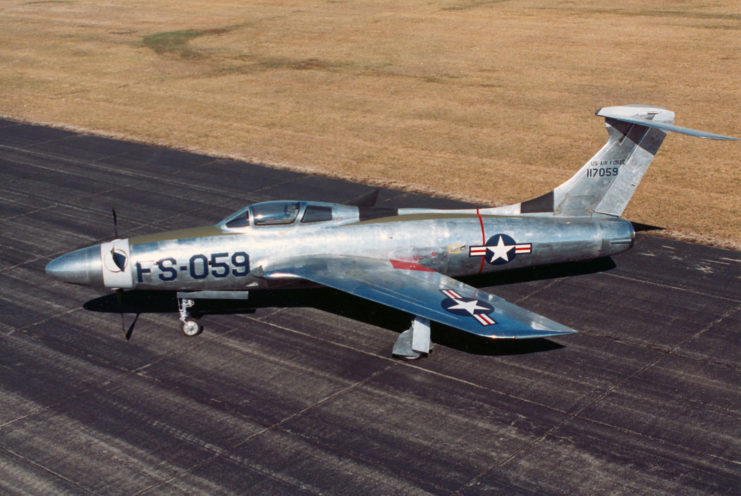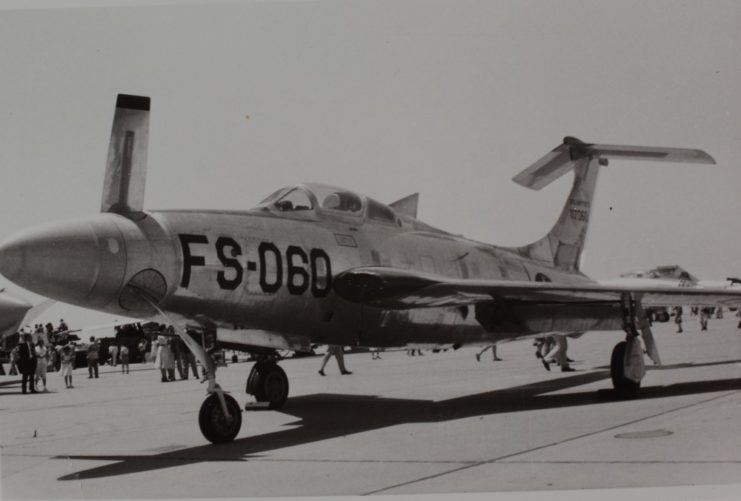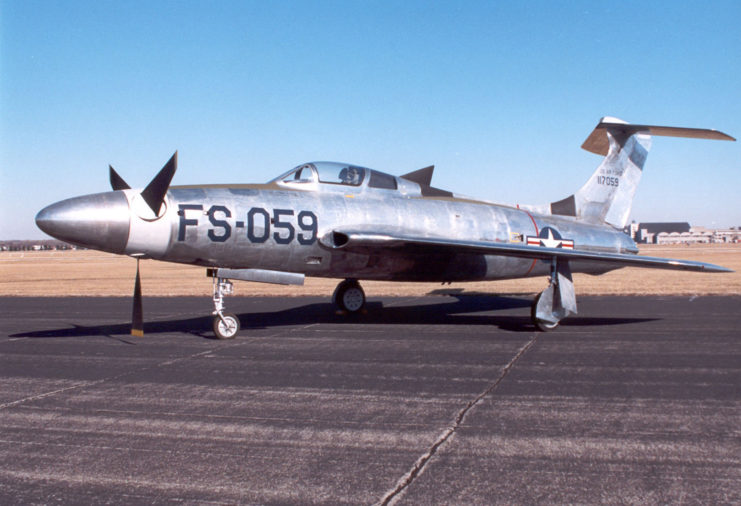The US Air Force has developed a number of experimental aircraft over the decades, but none was as interesting as the Republic XF-84H Thunderscreech. A derivative of the F-84 Thunderstreak, it was the “loudest aircraft ever built” – and among the most issue-riddled. As a result, it was canceled after just a handful of test flights.
Developing a new type of carrier aircraft

The Republic XF-84H Thunderscreech began life as Project 3347. It was developed following a US Navy request for an aircraft that could operate from aircraft carriers without the need for a catapult. This meant it needed to achieve jet speeds, while also featuring the same low fuel consumption, long range and low landing speeds of propeller-driven aircraft.
Co-sponsored by the US Air Force’s Wright Air Development Center at Wright-Patterson Air Force Base, Ohio, the prototypes were originally designated “F-106.” They were subsequently re-designated the XF-84H, after the Republic F-84 Thunderstreak from which it was semi-derived.
When the Navy canceled its order, the XF-84H became a research aircraft for the Air Force’s Propeller Laboratory at Wright-Patterson AFB, with the aim now being to test subsonic propellers.
Republic XF-84H Thunderscreech specs

Before we get into what made the Republic XF-84H Thunderscreech so unique, let’s get the basics out of the way. The aircraft was 51.5 feet long, with a wingspan of 33.5 feet. It was powered by an Allison XT40-A-1 turboprop engine capable of producing 4,360 kW of power and a range of 2,000 miles. Also notable was the XF-84H’s airframe, which was a modified version of Republic F-84 Thunderstreak’s.
The turboprop engine was located behind the cockpit and connected to the nose-mounted propeller via an extension shaft, which spun faster than the speed of sound. This allowed the XF-84H to have a projected speed of Mach 1.18, which meant it became the only turboprop-powered aircraft to feature an afterburner. While capable of providing an additional 5,390 kW of power, it was never used.
Issues with the Republic XF-84H Thunderscreech

The Republic XF-84H Thunderscreech was plagued with issues that made it dangerous to fly.
Similar to aircraft equipped with the T40 – North American XA2J Super Savage and Douglas A2D Skyshark – its shafts suffered from aggressive vibrations when traveling at high speeds. In addition to this, the engine required a 30-minute warm-up period, which made it unsuited for use in combat situations.
Testing the ‘loudest aircraft ever built’
On July 22, 1955, the XF-84H Thunderscreech underwent its first of 12 test flights at Edwards Air Force Base, California. Almost immediately, the aforementioned issues were noted.
